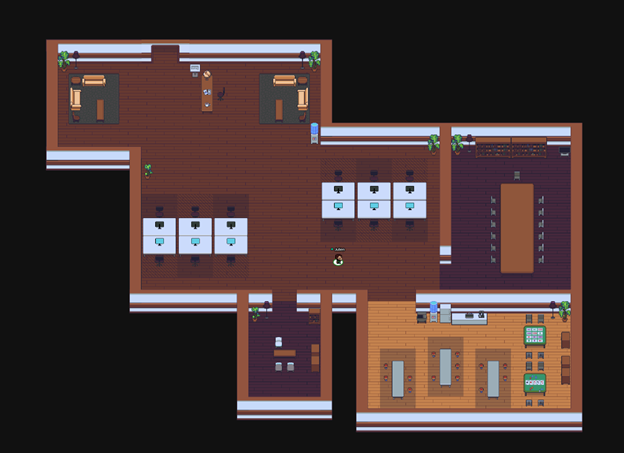Creating a Sense of Proximity With Your Students, Even at a Distance: Supporting Students Continually (2/2)
Mastering the functionalities of digital tools and platforms in order to accomplish specific tasks is already a challenge in itself, for both students and teachers. There is another level of difficulty: how do you combine these platforms and their functionalities in order to create an interesting, motivating and effective learning dynamic? As I am already comfortable with technology and have an interest in inclusive pedagogy [in French], this aspect of the distance learning relationship is of particular interest to me. I would like to present how I tried to establish a sense of proximity with my students in the context of my Poésie, slam et rap francophones [French poetry, slam and rap] course.
- In this text, I present how I used the Gather platform to connect with my students.
- In the first text, I discuss how I balanced synchronous and asynchronous sessions in my distance teaching to support my students’ learning.
Making connections with Gather
Like many, I realized last fall that one of the essential elements of distance learning is the connection you create with your students, but more importantly, that you maintain throughout the session. It is not an easy task to be accessible and available to students without sacrificing one’s own work-life balance, or even one’s sanity! It is in this context that I discovered Gather.
I started using this platform when I wanted to transpose a creative exercise I was doing in class. This activity involved whiteboards, 1 or 2 minute writing rounds, in small teams, and of course, many rotations. All this was, in my eyes, incompatible with Zoom! It is in this context that I became interested in Gather and proximity chat.
To learn more about proximity chat and the various platforms available online, Profweb suggests the article “Bringing More Spontaneous Interaction to the Virtual Classroom with Proximity Chat.“
After this first experience, I decided to use Gather also for my office hours. I wanted above all to recreate the conviviality and simplicity of the pre-COVID office hours where 1, 2 or 3 students could, at the same time, come and meet me. At the same time, I wanted to create what students sorely lack, that is, meeting spaces. So I took a basic canvas available in Gather and I made some slight modifications to it. My virtual office thus consists of:
- 1 large central room;
- 1 small room reserved for individual meetings;
- 1 medium-sized room where students can meet to work and discuss;
- what could be considered a break room with different fun activities.
The principle of my office hours is very simple: each week, I am available in my Gather space for a certain number of hours (for example, every Thursday from 9 am to 12 pm). Students can come and meet with me, chat with me, or just work on their own, alone or in teams. If they have a question, I am available. I can discuss with them as a group, but if a student wants to meet with me for a more personal question, we go to my private office. To avoid wasting time waiting alone at my computer for several hours, I activate the “auto-idle” function. I can then go about my business, correcting, answering emails, etc., and my camera and microphone are disabled. If a student wants to talk to me, he or she will see a little bell appear next to my avatar. By clicking on it, I will receive an audio notification, and by opening the Gather tab, my camera and microphone will automatically be turned back on.
Another advantage of Gather is the ability to recreate the dynamics of a classroom with the addition of various interactive elements. I mentioned whiteboards earlier, but there are many others. For example, you can add a sheet of paper to a table. This object can be activated by the students and will then open a Google document or a website. In my case, I created a Google document with all the links to the group documents completed by the students in class. I update it every week and the students have access to all the exercises done in class. It is also possible to add a television that, when activated, will play a YouTube video. There are many possibilities.
“Teaching at a distance with Gather” video tutorial Julien Martineau [in French]
Perennial changes
I think many of us in the past year have discovered the benefits of synchronous and asynchronous class sessions. What I take away from this practice is how prepared my students are for the synchronous class. For their part, the students really appreciate the flexibility that the asynchronous lessons give them. Moreover, by dividing the class into different sections and by using different formats (video clips, exercises, reading excerpts, etc.), it gives the students the opportunity to
- segment their learning
- take breaks
- review certain passages or explanations.
In the end, this approach combines 2 pedagogical approaches: universal design and flipped teaching. As for Gather, I will definitely continue to use it for some workshops and for my office hours. This platform is continually growing and evolving.


